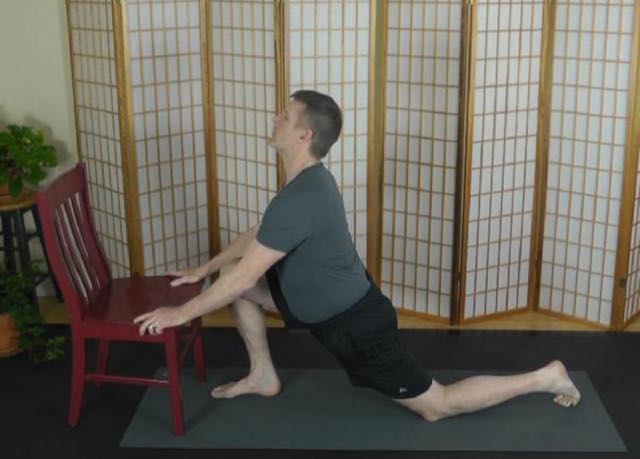Hip Flexor Stretches
Hip flexor stretches are essential in
relieving lower back pain
Hip flexor stretches -- stretches that target the psoas and iliacus muscles -- are essential for eliminating lower back pain.
Because the psoas attaches along the lumbar spine, tightness in this muscle can cause an excessive lordotic curve which can trigger the lower back muscles to also tighten.
Tightness in the iliacus, on the other hand, causes a different type of discomfort. Due to its location tucked in the bowl of the pelvis, iliacus tightness can be responsible for a range of symptoms including sacroiliac joint pain and hip pain.

The 2-second stretch vs static stretching
The stretching method I most frequently advocate is a repeated 2-second stretch (commonly known as Active Isolated Stretching) as opposed to static stretching.
I prefer this method because it does not provoke the protective stretch reflex, a reflex in which the muscle actually braces against the stretch.
If you've ever attempted to stretch a muscle, held it in a static and strong stretch for a period of time, felt the muscle start to shake, and you were unsure if it was actually lengthening... You may well have experienced the protective stretch reflex.
Stephen O'Dwyer, cnmt
Neuromuscular Therapist & Pain Relief Researcher
FOUNDERLower Back Pain Answers |

|
CURRENT COURSES POSTURAL BLUEPRINT FOR CORRECTING PELVIC TORSION: The Complete Guide To Restoring Pelvic Balance (2022) STRETCHING BLUEPRINT FOR PAIN RELIEF & BETTER FLEXIBILITY: The Complete Guide to Pain-Free Muscles Using Active Isolated Stretching (2020) HEALING THE HIDDEN ROOT OF PAIN: Self-Treatment for Iliopsoas Syndrome (2013) FREE MINI COURSE: Introduction to Active Isolated Stretching |
